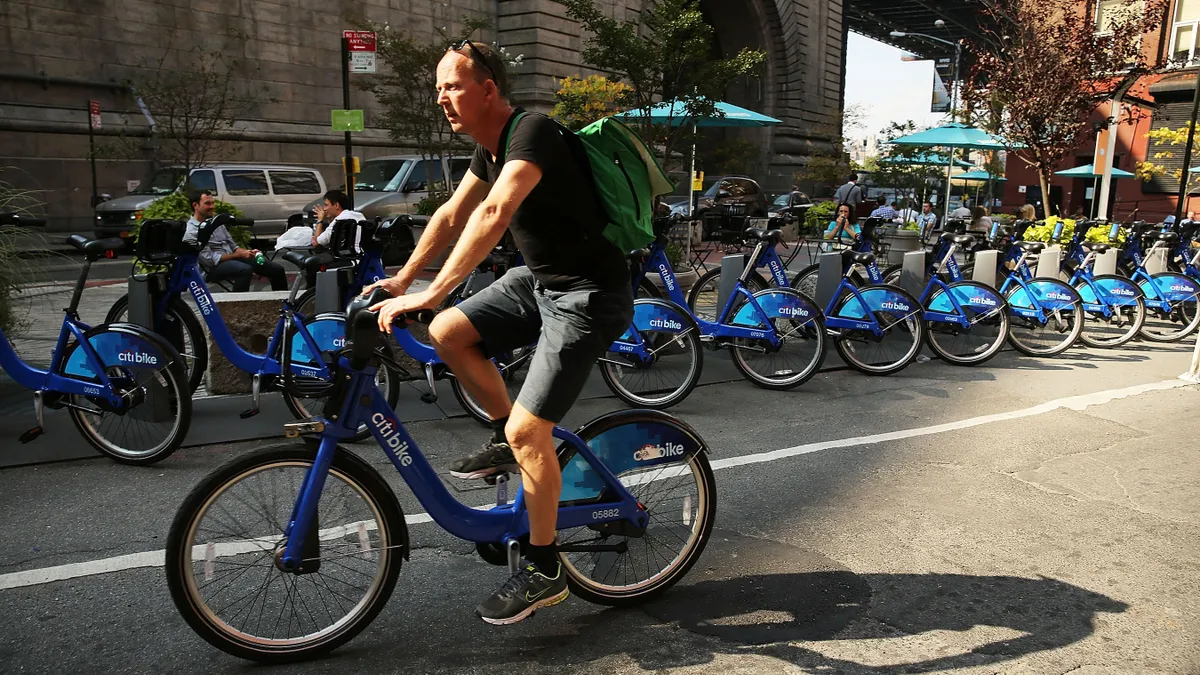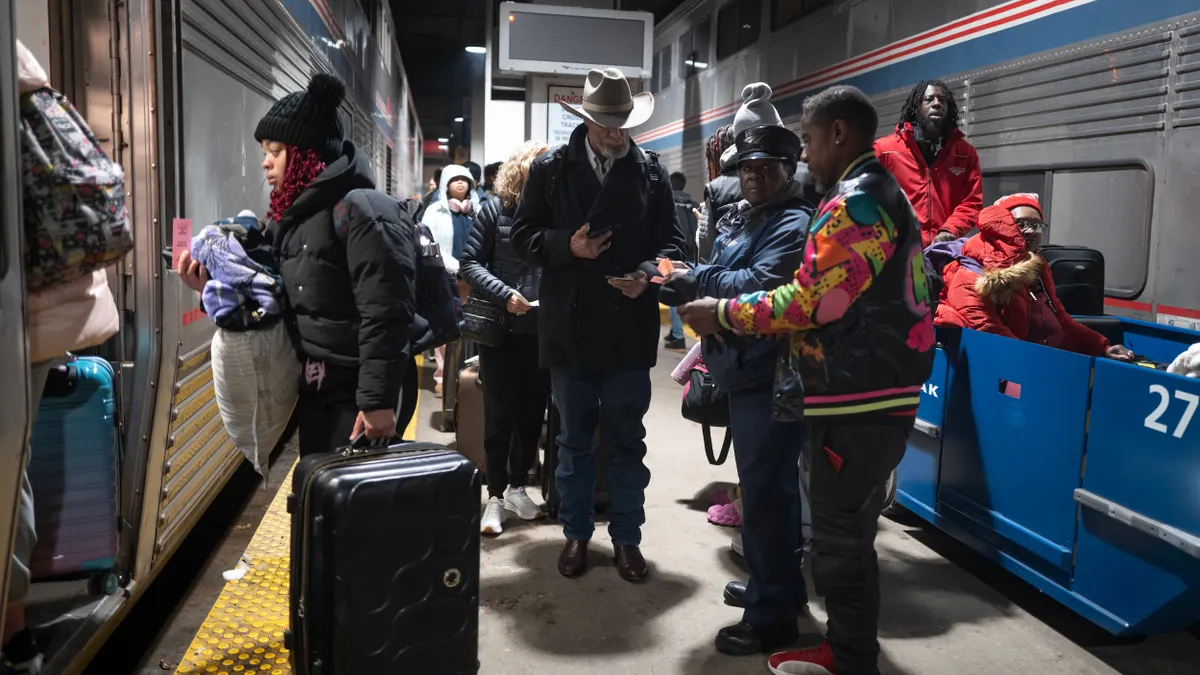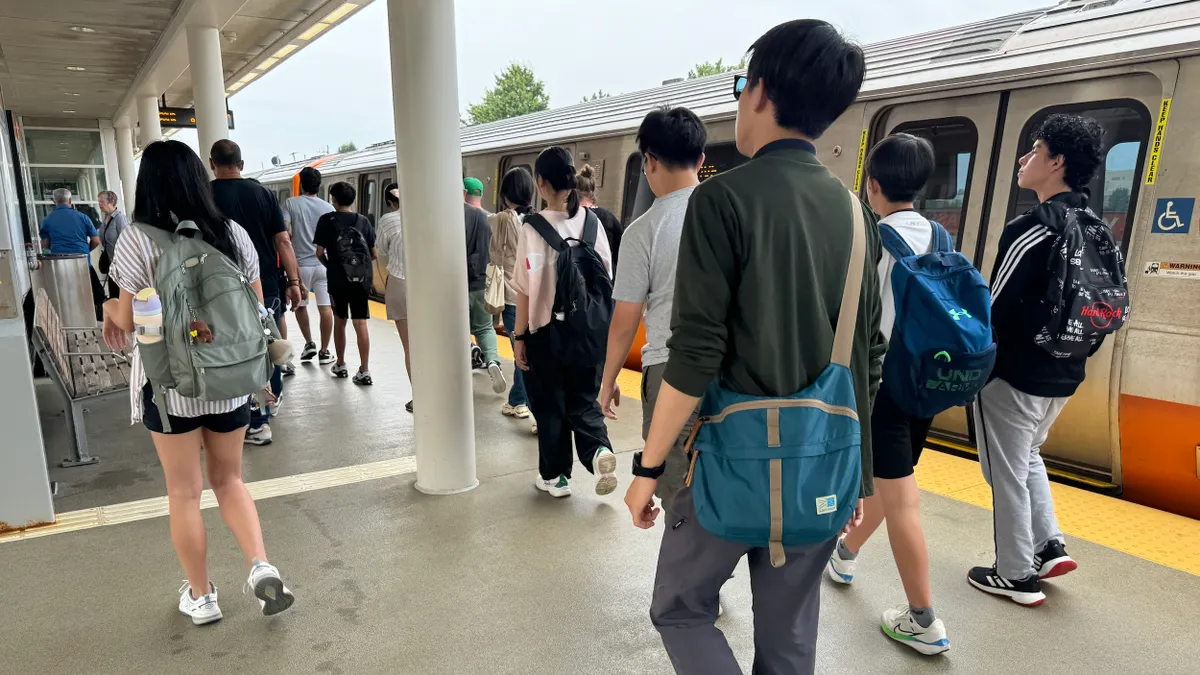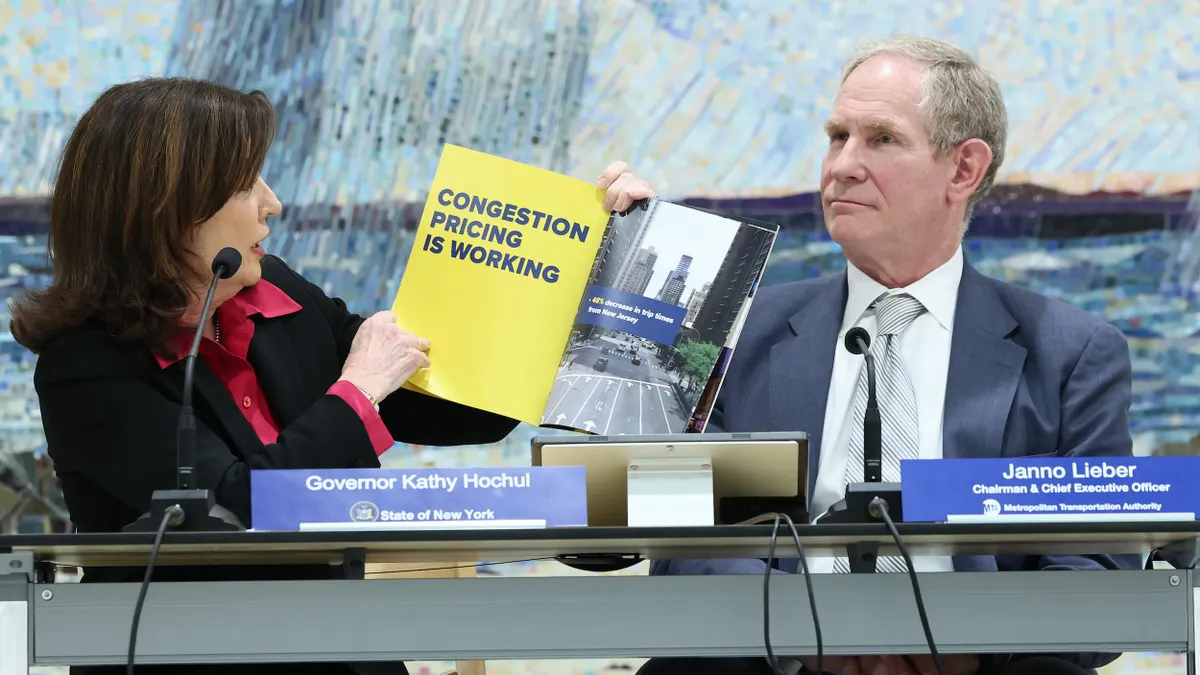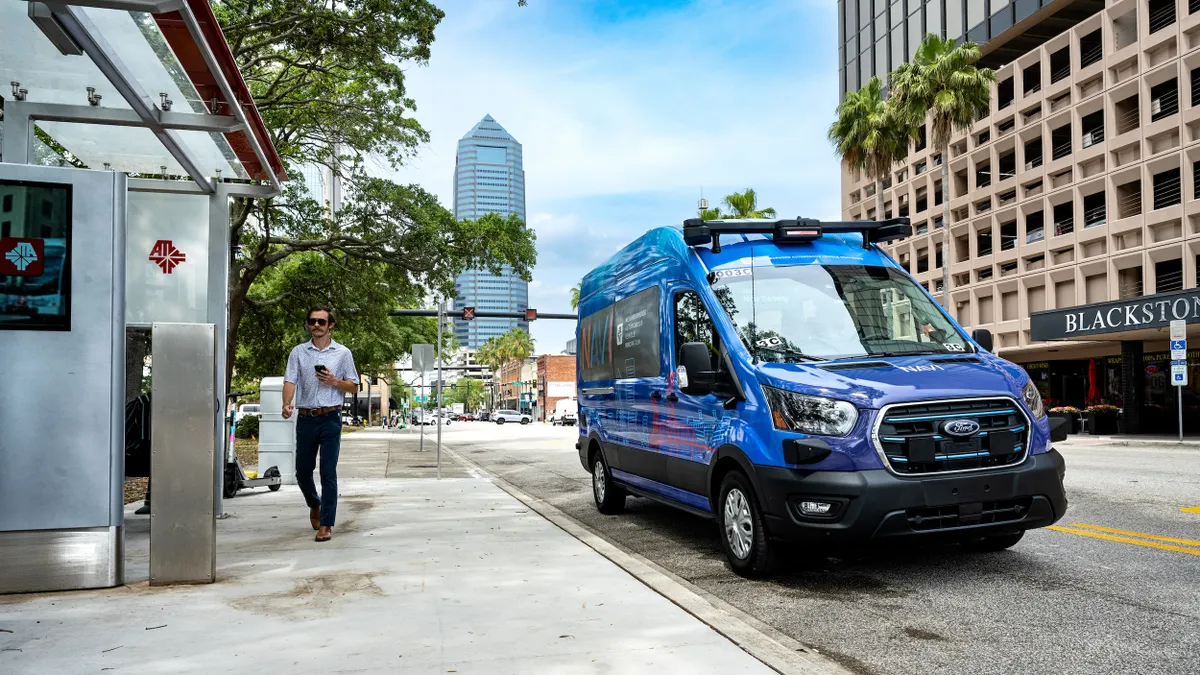As the coronavirus pandemic upends planned gatherings globally, smart city conferences have scrambled to stay afloat. Some organizations have canceled events altogether, while others including the Shared-Use Mobility Center, CoMotion and ITS World Congress transitioned to virtual offerings.
CoMotion announced in March it would postpone its CoMotion MIAMI event, and by May 28, the group shared that the event would be held online. But, like most conference organizers, they did not have a contingency plan for such a catastrophic event.
"There was unfortunately no playbook I could look at that said what to do in case of a global pandemic," Jonah Bliss, CoMotion vice president of new media and marketing, told Smart Cities Dive.
As industry conferences shift to a fully digital format, organizers are making unprecedented decisions and creating a host of "new normal" standards for information sharing within the smart cities industry — potentially shaping a new future for conferences and the way people network.
Virtual silver linings
CoMotion got its start as an events company focused on mobility, Bliss said, yet "right now there’s no events and there’s no mobility," which is "a little bit of a double whammy." By launching a free webinar series in March dubbed "CoMotion LIVE," the group learned "there’s still really a great appetite for people convening," he said.
And while producing a virtual event can bring a host of new obstacles — including security challenges like "Zoom-Bombing" — the digital format has provided some benefits. For starters, online conferences can be more inclusive, particularly to parents with young children, attendees with disabilities or attendees located far from the planned event location.
"The advantages to doing an online event is that you can connect people from anywhere in the world and as long as they have internet connection, they can show up to speak and to learn," Bliss said.
This was seen by the Shared-Use Mobility Center, as its virtual 2020 National Shared Mobility Summit in May attracted new audiences. Transit agency employees from small towns in West Virginia, Oklahoma and Central Wisconsin were able to attend the event when they likely couldn’t have afforded the admission and travel expenses otherwise, Executive Director Sharon Feigon told Smart Cities Dive.
Enjoyed the candid convo about post-lockdown urban mobility in @SharedUseCntr's plenary panel today.
— David Zipper (@DavidZipper) May 5, 2020
I was esp struck by @jeffreytumlin's critique of SF's shared micromobility co's (several of which recently left the city): "They've got a lot of work to do to rebuild trust." pic.twitter.com/Q6CScdj0NV
Digital events can also save on greenhouse gas emissions created from transportation to conferences, which can contribute more than 2 metric tons of carbon dioxide per solo traveler, according to Nature Research.
Before the pandemic, the Shared-Use Mobility Summit was scheduled to host its conference at Chicago’s McCormick Place convention center, which has since been turned into a makeshift hospital to treat COVID-19 patients. But the virtual event, garnering about 550 attendees, went better than anticipated in some ways, Feigon said.
Ready for our sesh @SharedUseCntr “Transit innovation in challenging times” #fairfareschi pic.twitter.com/wGT72ZLKUP
— Lynda Lopez (@Lyndab08) May 6, 2020
She said moving the conference online with a remote 18-person staff was a challenge, as it required the group to communicate on different virtual channels like Slack and WhatsApp. But from a financial standpoint, going virtual instead of canceling the event "really saved" the group, as a lot of sponsors stuck with them.
The "informal" aspects of the summit were the biggest areas of success, according to Feigon. She noted the challenges of replicating the networking opportunities that generally happen at an in-person summit, but said the organizers attempted to fill those gaps with opportunities for people to connect in smaller groups.
The conference coordinators offered yoga sessions and transportation-themed cocktail recipe lessons, and created an "open room" for attendees to enter at any point to meet other folks "hanging out." They also hosted a Slack workspace for people to introduce themselves and identify their areas of work or interest. Individuals could then create separate Slack channels among other attendees or within groups to further the conversation.
CoMotion MIAMI organizers are also trying to facilitate "the serendipity" of networking and unplanned interactions via a virtual format.
"The panels and the speeches are simpler to port over," Bliss said. "But the in-person meetings are a little bit more challenging to make work." Facilitating those connections will come down to using the appropriate software and understanding the audience, he said.
The future is hybrid
The sudden shift to virtual conference formats is an acceleration of existing trends like teleconferencing and remote work, Bliss said. About half of all Americans working before the pandemic now work remote, and employers like Square, Facebook and Twitter have informed employees they can now work remote indefinitely.
The shift to virtual work will likely have lasting impacts not just on workforces, but on conferences as well. However, this isn't a death knell for in-person networking or events, according to Bliss and Feigon, as people will still be hungry for those in-person interactions.
Instead, smart cities and other industries could likely see more hybrid events, with an in-person portion to enhance social interactions and an option for people to participate via their browsers.








